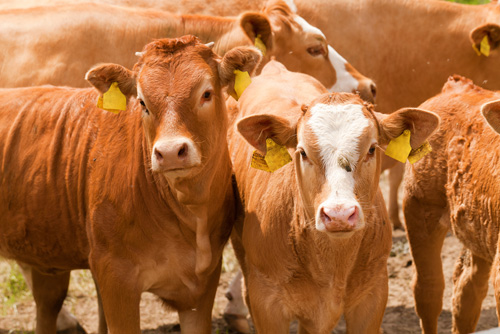 Thanks to current high beef prices, regional management practices, relatively temperate weather and potatoes, Oregon’s beef producers stand to gain from the national drought.
Thanks to current high beef prices, regional management practices, relatively temperate weather and potatoes, Oregon’s beef producers stand to gain from the national drought.
By Peter Beland
 Tens of thousands of acres of corn are withering under intense heat throughout the American heartland, raising the price of corn and by proxy cattle products. The worst Midwest drought since 1988 has cut national corn-harvest estimates by 12 percent, raising the price per bushel 34 percent in the past four weeks.
Tens of thousands of acres of corn are withering under intense heat throughout the American heartland, raising the price of corn and by proxy cattle products. The worst Midwest drought since 1988 has cut national corn-harvest estimates by 12 percent, raising the price per bushel 34 percent in the past four weeks.
Though Oregon is not a corn state, its No. 1 and No. 2 commodities in 2010 were beef and dairy respectively. When feed prices go up, operation costs go up and those costs are passed to the consumer. But thanks to current high beef prices, regional management practices and relatively temperate weather, Oregon’s beef producers stand to gain from the national drought.
Just as last year’s wheat spike showed, what happens in places as far away as Russia can have very immediate repercussions closer to home. “Even if we’re enjoying good weather here and good yields, we really are connected to what’s going on elsewhere in the country and the world,” says Oregon Department of Agriculture spokesman Bruce Pokarney. But Oregon does produce and export huge quantities of agricultural products. When beef prices are high and demand growing in Asia, the prospects of running a beef operation aren’t all that bleak in light of rising feed costs. “Eighty percent of what we produce leaves Oregon,” says Pokarney.
But even with high beef prices, how do you deal with the higher front-end costs?
According to Oregon Cattlemen’s Association marketing director Ron Rowan, Oregon is feed-deficit area, meaning beef producers consume more feed than is produced in the state. But Oregon’s beef producers have found ways to get around this: French fries.
Oregon and Washington are home to a number of potato operations that grow spuds destined for Ore-Ida and other French fry giants. Over the years, especially when ethanol production put pressure on corn prices (35% of national corn crop is used for ethanol production, says Rowan), Oregon beef producers have supplemented their corn feedstock with potato by-products. “Potatoes…keep us competitive,” says Rowan.
Another way Oregon producers have stayed in the game is, well, they’re not in Texas. Last year, Texas, Oklahoma and Kansas experienced significant droughts, bumping up hay prices and maintenance costs for cattle operations. Many cattle were culled and the demand for Oregon cattle increased. And though alfalfa production in Oregon has decreased in recent years because growers have planted other crops, the past two years have still seen good harvests.
So, Oregon isn’t Texas and it has potatoes. Turns out this is a decent recipe to weather a drought that has rocked the rest of the country.
Peter Beland is a contributing writer for Oregon Business.

